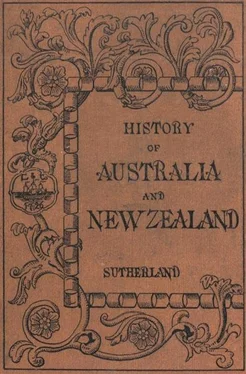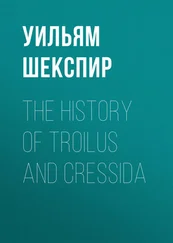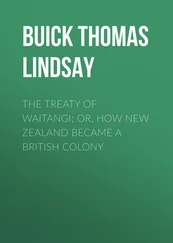Of late years Tasmania has made great advances. Her population has risen to about 150,000, and her resources have been enormously increased by the rapid development of her mineral enterprise. Tin mines of great value are now widely spread over the west of the island, and gold mines of promising appearance are giving employment to many persons who formerly could find little to do. There is room for a very great further development of the resources of Tasmania; but the colony is now on the right track, and her future is certain to be prosperous.
The Tasmanian natives were of a different type from those of Australia, having more of the negro in them. They were even ruder and less advanced in their habits, although not without qualities of simplicity and good-humour that were attractive. When white men first landed in their island there were about 7,000 of them roving through the forest and living upon opossums. But by the year 1869 all were gone but a man and three women. In that year, the man died, and one by one the women disappeared, till at last with the death of Truganina in 1877 the race became extinct.
CHAPTER XX.
SOUTH AUSTRALIA, 1850-1890.
1. Temporary Decline.—In 1851 the prosperity of South Australia was somewhat dimmed by the discovery of gold in Victoria; for, before the middle of the following year, the colony was deserted by a very large proportion of its male inhabitants. The copper mines were with difficulty worked, for want of men; the fields were uncultivated, the sheep untended, and the colony experienced a short period of rapid decline. However, the results obtained on the goldfields by most of these fortune-seekers were hardly to be compared with the steady yield of the fertile cornfields and rich copper mines of South Australia; and the majority of those who had thus abandoned the colony returned in a short time to their families and their former employments.
Governor Young adroitly turned the discovery of gold to the advantage of his own colony by establishing an escort between Bendigo and Adelaide; and, as this was remarkably well equipped, many of the diggers sent their gold by this route rather than to Melbourne, thus giving to South Australia some of the advantages of a gold-producing country. The crowds of people rushing to the goldfields had carried with them nearly all the coins of the colony; and the banks, although they had plenty of rough gold, were yet unable, from scarcity of coined money, to meet the demands upon them. In this emergency, Sir Henry Young took the extreme and somewhat illegal step of instituting a new currency, consisting of gold cast into small bars or ingots; and, although afterwards mildly censured by the Home Government for exceeding his powers, yet he could justly assert that this measure had saved the colony from serious commercial disaster.
But South Australia was still more benefited by the great market opened for its flour and wheat among the vast crowds on the goldfields; and, when the first period of excitement was over, it was found that the colony was, at any rate, not a loser by the success of its neighbours.
2. The Real Property Act.—In 1858 South Australia took the lead in a reform which is now being adopted by nearly all the civilised nations of the world. According to English law, each time an estate was transferred from one person to another, a deed had to be made out for the purpose; and if changes in its ownership had been frequent, it would be held by the last purchaser in virtue of a long series of documents. Now, if any one wished to buy a piece of land, he was obliged for safety to examine all the preceding deeds in order to be quite certain that they were valid; even then, if he bought the land, and another person, for any reason whatever, laid claim to it, the owner had to prove the validity of each of a long series of documents, going back, perhaps, for centuries. A flaw in any one of these would give rise to a contest which could be settled only after a very tedious investigation; and thus arose the long and ruinous Chancery suits which were the disgrace of English law. When a man’s title to his estate was disputed, it often happened that he had to spend a fortune and waste half a lifetime in protracted litigation before all the antecedent deeds could be proved correct.
Mr. R. Torrens had his attention drawn to this very unsatisfactory state of things by the ruin of one of his relatives in a Chancery suit. He thought long and carefully over a scheme to prevent the occurrence of such injustice, and drafted a bill for a new method of transferring property. He proposed to lay this before the South Australian Parliament, but his friends discouraged him by declaring it was impossible to make so sweeping a change; and the lawyers actively opposed any innovation. But Torrens brought forward the bill; its simplicity and justice commended themselves to the people and to the House of Assembly, and it was carried by a large majority. According to the new scheme, all transferences of land were to be registered in a public office called the Lands Titles Office, the purchaser’s name was to be recorded, and a certificate of title given to him; after this his right to the property was indisputable. If his possession was challenged, he had simply to go to the Lands Titles Office and produce his certificate to the officer in charge, who could turn to the register and at once decide the question of ownership. After this, no dispute was possible. If he sold his land, his name was cancelled in the public register, and the buyer’s name was inserted instead, when he became the undisputed owner. Mr. Torrens was appointed to be registrar of the office, and soon made the new system a great success; it was adopted one after another in all the colonies of Australia, and must become eventually the law of all progressive nations.
3. The Northern Territory.—In 1864 the Northern Territory was added to the dominion of South Australia, and from Adelaide an expedition was despatched by sea to the shores of Van Diemen’s Gulf, in order to form a new settlement. After many difficulties, caused chiefly by the disputes between the first Government Resident, or Superintendent, and the officers under him, a branch colony was successfully founded at Port Darwin, opposite to Melville Island. This settlement has become a prosperous one: all the fruits and grains of tropical countries flourish and thrive to perfection; gold has been discovered; and it is asserted that there exist in the neighbourhood rich mines of other metals, which will, in the future, yield great wealth, while the stations that are now being formed are peculiarly favourable to the rearing of cattle and of horses. Yet the number of people who settle there continues small on account of the very hot climate; Palmerston, the capital, is as yet a town of only a few hundred inhabitants, and all the really hard work of the district is done by Chinese.
4. Overland Telegraph.—In a previous chapter it has been described how MʻDouall Stuart, after two unsuccessful efforts, managed to cross the continent from Adelaide to Van Diemen’s Gulf. Along the route which he then took, the people of South Australia resolved to construct a telegraph line. A gentleman named Charles Todd had frequently urged the desirability of such a line, and in 1869 his representations led to the formation of the British Australian Telegraph Company, which engaged to lay a submarine cable from Singapore to Van Diemen’s Gulf, whilst the South Australian Government pledged itself to connect Port Darwin with Adelaide by an overland line, and undertook to have the work finished by the 1st of January, 1872. Mr. Todd was appointed superintendent, and divided the whole length into three sections, reserving the central portion for his own immediate direction, and entrusting the sections at the two ends to contractors. It was a daring undertaking for so young a colony. For thirteen hundred miles the line would have to be carried through country which never before had been traversed by any white men but Stuart’s party. Great tracts of this land were utterly destitute of trees, and all the posts required for the line had to be carted through rocky deserts and over treacherous sand-hills. Todd had, with wonderful skill and energy, completed his difficult portion of the task, and the part nearest to Adelaide had also been finished before the time agreed upon; but it fared differently with those who had undertaken to construct the northern section. Their horses died, their provisions failed, and the whole attempt proved a miserable collapse. The Government sent a party to the north, in order to make a fresh effort. Wells were dug, at intervals, along the route, and great teams of bullocks were employed to carry the necessary provisions and materials to the stations; and yet, in spite of every precaution, the result was a failure. Meanwhile the cable had been laid, and the first message sent from Port Darwin to England announced that the overland telegraph was not nearly finished. The 1st of January, 1872, being now close at hand, Mr. Todd was hastily sent to complete the work. But the time agreed upon had expired before he had even made a commencement, and the company threatened to sue the South Australian Government for damages, on account of the losses sustained by its failure to perform its share of the contract. For the next eight months the work was energetically carried forward; Mr. Todd rode all along the line to see that its construction was satisfactory throughout. He was at Central Mount Stuart in the month of August, when the two ends of the wire were joined, and the first telegraphic message flashed across the Australian Continent. But, meantime, a flaw had occurred in the submarine cable, and it was not until October that communication was established with England. On the second day of that month, the Lord Mayor of London, standing at one end of the line, sent his hearty congratulations through twelve thousand five hundred miles of wire to the Mayor of Adelaide, who conversed with him at the other extremity. The whole work was undertaken and accomplished within two years; and already not only South Australia, but all the colonies, are reaping the greatest benefits from this enterprising effort. Another undertaking of a similar character has been completed by the efforts of both South and West Australia; along the barren coast on which Eyre so nearly perished there stretches a long line of posts, which carries a telegraph wire from Perth to Adelaide.
Читать дальше












